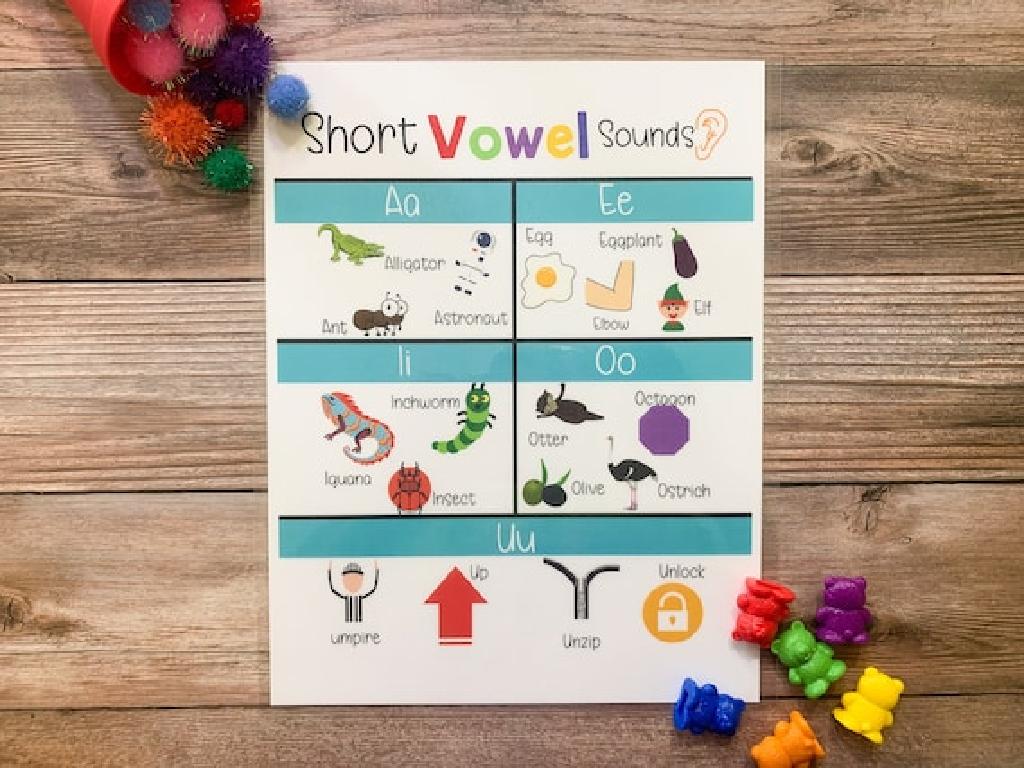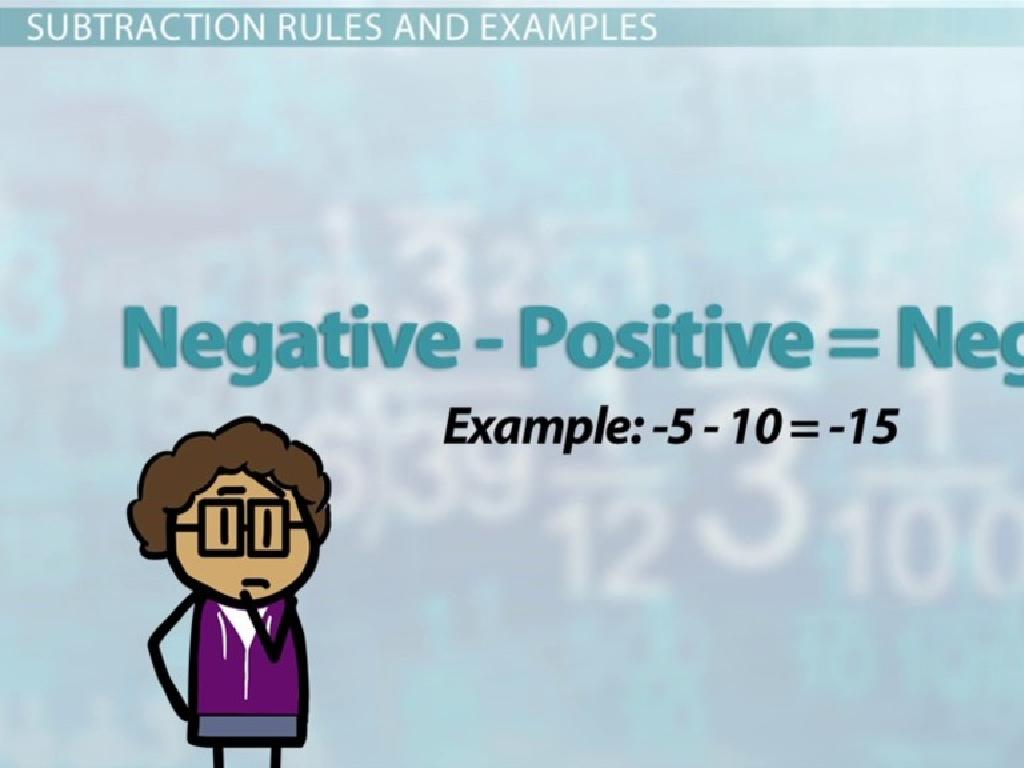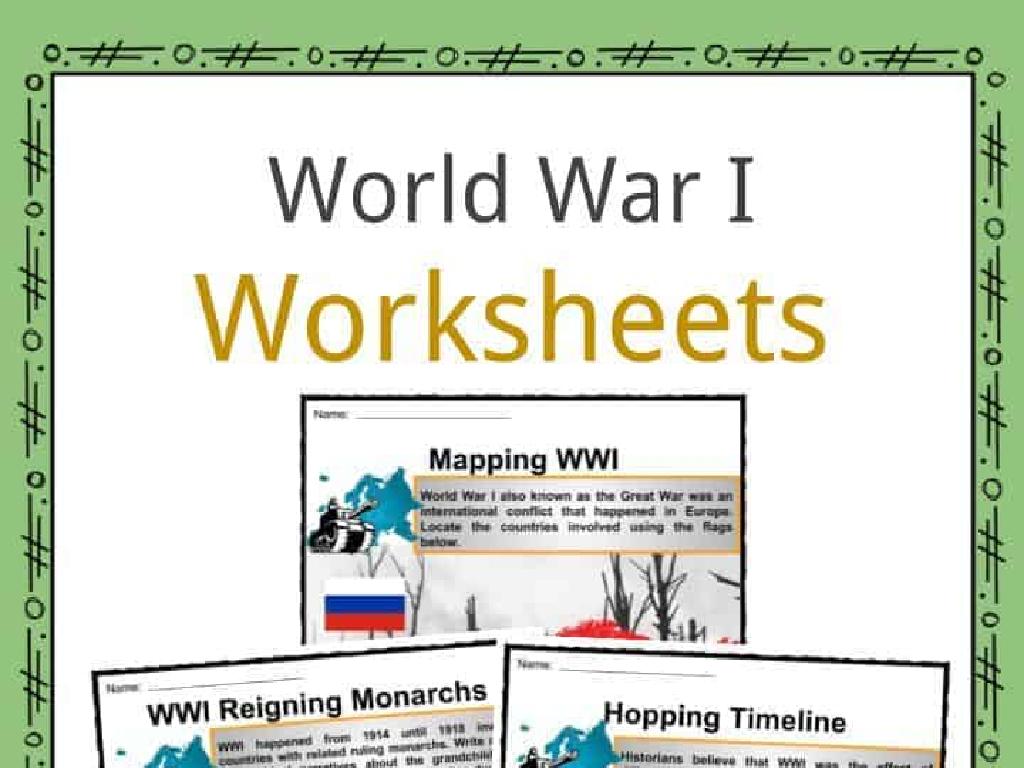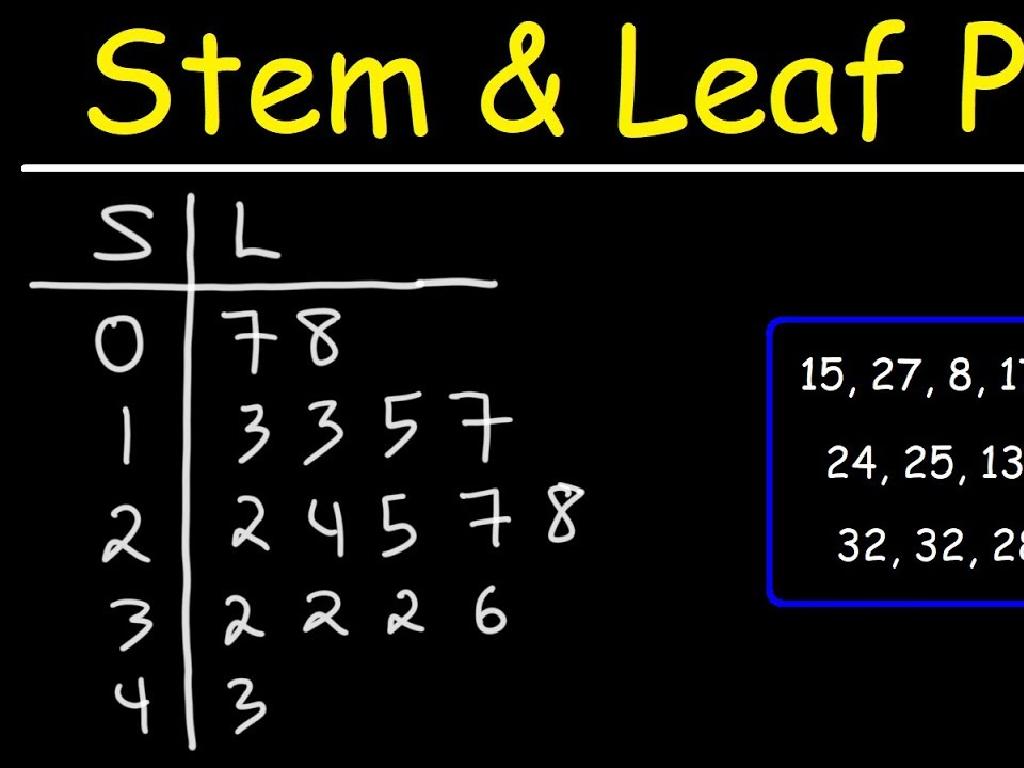Multiplication Facts Up To 10
Subject: Math
Grade: Third grade
Topic: Multiplication Fluency Up To 10
Please LOG IN to download the presentation. Access is available to registered users only.
View More Content
Welcome to Multiplication!
– Today’s focus: Facts up to 10
– Multiplication as repeated addition
– If you have 4 groups of 3 apples, that’s 3+3+3+3 or 4×3!
– Why multiplication is super
– It helps quickly solve problems like 4 groups of 3 apples
– Practice makes perfect
– The more we practice, the faster we get!
|
This slide introduces students to the concept of multiplication, emphasizing its importance and utility in everyday math. Start by explaining that multiplication is a way to add the same number several times, which makes it faster and easier than adding numbers one by one. Highlight how multiplication is a fundamental skill that can simplify many math problems, making it a ‘super skill’. Encourage students to practice multiplication facts regularly to improve their speed and accuracy. Provide examples and possibly incorporate a game or interactive activity to reinforce the learning objective.
Understanding Multiplication
– Multiplication means groups of objects
– Example: 3 groups of 2 apples
– Imagine you have 3 baskets, each with 2 apples
– Each group has the same number of items
– Consistent quantity in each group is key
– 3 groups of 2 apples equals 6 apples
– 3 x 2 is the same as adding 2 apples 3 times: 2 + 2 + 2 = 6
|
This slide introduces the concept of multiplication as a way to count groups of the same size quickly. Start by explaining that multiplication is like adding the same number over and over. Use the example of apples to show that 3 groups of 2 apples give us a total of 6 apples. Emphasize that multiplication is a shortcut for addition when dealing with multiple groups of the same number of items. Encourage students to visualize the groups and use real-life objects or illustrations to help them understand. Have them practice with different numbers of groups and items to solidify the concept.
Multiplication Facts: 0, 1, and 2
– Multiplying any number by 0 equals 0
– Multiplying any number by 1 equals the same number
– Multiplying by 2 doubles the number
– If we have 2 groups of 3 apples, we have 6 apples in total
– Let’s practice with examples!
– We’ll solve problems together on the board
|
This slide introduces the basic multiplication facts for 0, 1, and 2. Emphasize to students that any number multiplied by 0 is 0, which is like having zero groups of something – you end up with nothing. When multiplying by 1, the number doesn’t change; it’s like having one group of that number. Multiplying by 2 is simply doubling the number, which they may understand as adding the number to itself. During practice time, engage the class with interactive examples on the board. Ask students to come up and solve problems, ensuring to include a variety of numbers to multiply by 0, 1, and 2. This will help solidify their understanding of these foundational multiplication facts.
Multiplication Facts: 3, 4, and 5
– Patterns with 3s, 4s, and 5s
– Count by 3s, 4s, 5s to see patterns
– Sing a multiplication song
– Helps memorize facts in a fun way
– Group Activity: Multiplication Match
– Match cards with products and equations
|
This slide introduces students to multiplication facts for the numbers 3, 4, and 5. Start by explaining the concept of patterns in multiplication and demonstrate counting by 3s, 4s, and 5s to help students recognize these patterns. Introduce a catchy multiplication song that includes these facts to make learning fun and memorable. For the group activity, provide sets of cards with multiplication problems and their corresponding products for students to match. This interactive game reinforces their understanding and memorization of multiplication facts. Possible variations of the activity could include timed matches, team competitions, or matching games where students create their own multiplication cards.
Mastering Multiplication: Facts for 6, 7, 8, 9, and 10
– Learn tricks for multiplication
– Rhymes to remember facts
– ‘Six times six is thirty-six’ sounds like a fix!
– Example: 5 times table trick
– Use your hands to multiply by 5; each finger is worth 5!
– Practice with a quick quiz
– Pair up and test each other on the facts!
|
This slide is aimed at helping third-grade students memorize multiplication facts for 6, 7, 8, 9, and 10 using mnemonic devices such as rhymes and patterns. For example, to remember the 5 times table, students can use the hand trick where each finger represents a multiple of 5. During practice time, students will pair up and quiz each other to reinforce their memory of these facts. Teachers should prepare a set of quick quiz questions for this activity and encourage students to come up with their own rhymes or patterns to share with the class.
Using Multiplication in Real Life
– Multiplication at the grocery store
– Calculate total price of multiple items
– Counting insect legs with multiplication
– Insects have 6 legs. How many legs do 5 insects have?
– Discuss multiplication in daily life
– Share personal multiplication examples
|
This slide aims to show students how multiplication is a part of everyday life and not just a math concept. At the grocery store, multiplication helps us find out the total cost when buying several units of the same item. For example, if one apple costs $0.50, and we buy 10, we use multiplication (10 x $0.50) to find the total cost. In nature, multiplication helps us quickly count multiple sets of identical items, like insect legs. Encourage students to think of times when they have seen or used multiplication outside of school. During the class discussion, prompt them to share their experiences and help them see the practical applications of multiplication in various scenarios. Prepare to guide the discussion with examples and praise their contributions to foster a positive learning environment.
Multiplication Games: Learning Can Be Fun!
– Play a computer multiplication game
– Solve puzzles in groups
– Work with friends to find answers to multiplication problems
– Enjoy Multiplication Bingo
– Each number on your Bingo card is an answer to a multiplication fact
– Collaborate and learn together
|
This slide introduces interactive and engaging activities to help students practice multiplication facts up to 10. The computer game should be age-appropriate and designed to reinforce multiplication skills. Group puzzles encourage teamwork and problem-solving, as students discuss and work through multiplication challenges together. Multiplication Bingo is a fun way to get the whole class involved, as students mark off answers on their Bingo cards in real-time as they solve multiplication facts. These games are excellent for reinforcing the concept of multiplication, improving fluency, and providing a break from traditional learning methods. For the teacher: Prepare different levels of puzzles and Bingo cards to cater to varying skill levels within the class. Ensure that each student participates and encourage them to help each other out.
Class Activity: Multiplication Fact Challenge
– Pair up for flashcard challenge
– Time your multiplication mastery
– How fast can you correctly answer all?
– Aim for all facts correct quickly
– Winners earn Mastery Certificates!
|
This activity is designed to promote multiplication fluency among third-grade students by making learning fun and competitive. Start by explaining the rules: students will pair up and use flashcards to quiz each other on multiplication facts up to 10. Set a timer to add a sense of urgency and track progress. The goal is to answer all flashcards correctly in the shortest amount of time. Prepare certificates in advance to reward the pairs who demonstrate mastery by getting all facts right the fastest. This will motivate students to practice and improve their multiplication skills. Possible variations of the activity could include group challenges, timed solo runs, or a ‘multiplication bee’ format where students take turns answering flashcard questions in front of the class.






